When the chill of winter starts to set in, many homeowners turn to their fireplaces to keep them warm. But what if you want to burn pine instead of just logs? Can you burn pine in a fireplace? In this article, we will answer that question and provide tips on how to get the most out of your fireplace this winter.
Can You Burn Pinewood Indoors (Is It Safe)?
The short answer is yes, you can burn pine in a fireplace. Pine wood is a great option for indoor fires because it is one of the densest woods on the market and burns hotter than other types of wood. However, burning pine indoors does come with some risks that must be taken into consideration before deciding to use this type of fuel in your home.
Another thing to consider is the smell that pinewood can produce when burning indoors. The strong scent of pine in an enclosed space may be unpleasant and hard to eliminate so it’s important to check with your local regulations before deciding to burn this type of fuel indoors.
Can You Burn Pine Needles Or Pine Cones?
The short answer to this question is no. Pine needles and pine cones should never be burned in a fireplace as they burn too quickly and can cause the fire to flash. This means that burning these items can create a sudden explosion of flames, which can be dangerous. Burning pine needles or cones also causes them to pop, creating sparks that could start a fire outside of your fireplace. [1]
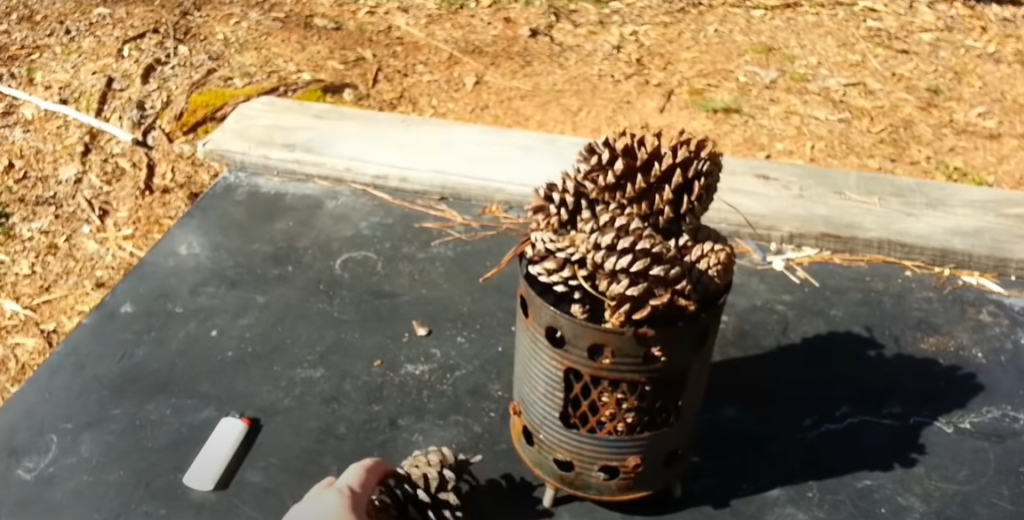
How Does Pine Compare To Other Types Of Firewood?
Pine is a popular choice for firewood, but many people are unsure of its heat yield and whether it can be safely burned in a fireplace. When compared to other types of firewood, pine has a low overall BTU content (British Thermal Units). This means that while it will still produce heat, it won’t last long and you’ll need more firewood if you’re planning on having a long-lasting fire. On the plus side, the soft texture of pine makes it much easier to split than other types of wood.
What Exactly Is Creosote?
Creosote is a type of tar-like deposit that builds up on the walls and pipes of your fireplace or stove as a result of burning wood. This buildup can cause chimney fires if not regularly cleaned out with a professional chimney sweep.
How Can You Reduce Creosote Buildup?
When burning pine in a fireplace, it’s important to be aware of the potential for creosote buildup. Creosote is a flammable material that can form on the inside of a chimney from the burning of wood. Too much buildup can create a fire hazard and reduce airflow, so it should be prevented or removed if necessary.
Finally, keep the fire burning bright and hot. A dull, smoldering fire will increase smoke levels, leading to more creosote buildup. To keep your fireplace burning hotter, consider using a log starter or kindling instead of newspaper.
By following these tips, you can help reduce the amount of creosote buildup when burning pine in your fireplace and ensure that it remains safe and efficient. With proper maintenance and care, you’ll be able to enjoy your fireplace all winter long! [2]
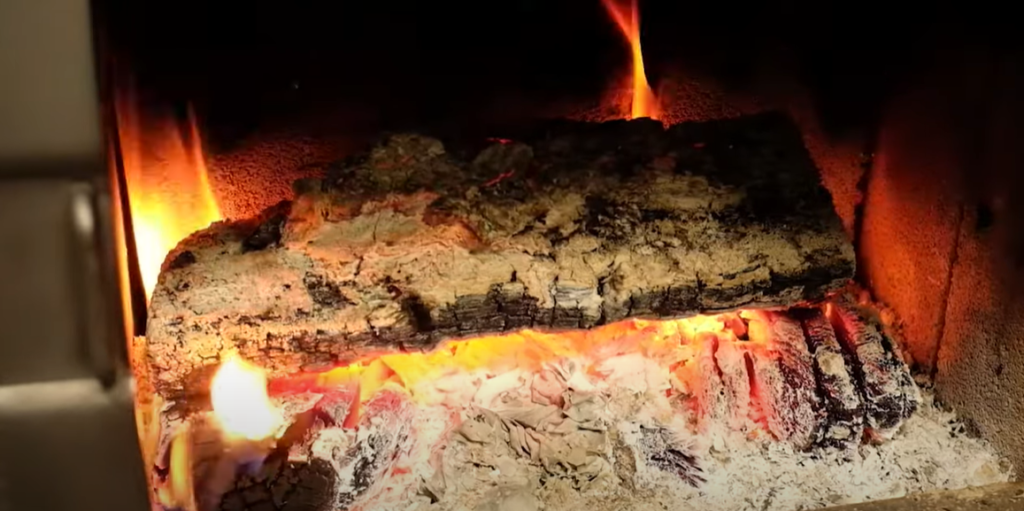
Advantages Burning Pinewood As Firewood
For some people, burning pinewood is a great option to heat their home. Burning pine can be a wonderful way of adding a pleasant aroma to your fireplace. It also has many other advantages including:
- Pinewood burns hotter than most types of wood, which means it generates more heat for less money.
- Pine produces less smoke and soot than other woods, making it better for the environment and safer for your family’s health.
- Pine is lighter than hardwoods such as oak or maple and because of this it is easier to handle when stoking up the fire.
- The flame created by burning pine is brighter and longer lasting than that of hardwoods.
Disadvantages Burning Pinewood As Firewood
It is not recommended to burn pine in a fireplace due to its low heat output, fast burning rate and the tendency for it to spark and cause excessive creosote build-up. Pine wood has a lower heating value than hardwood varieties such as oak, maple and hickory. The flame will be less intense than if you were to burn other types of firewood, which may not provide enough heat to warm up your home efficiently. In addition, pine burns more quickly than other hardwoods once lit. This means you’ll have to continuously add more logs throughout the night just to keep it burning.
Pine also has a higher resin content than most other varieties of firewood making it more susceptible to sparking and popping. This can cause creosote deposits to form in your chimney which is a leading cause of chimney fires. This can pose a serious safety hazard and should be avoided. [3]
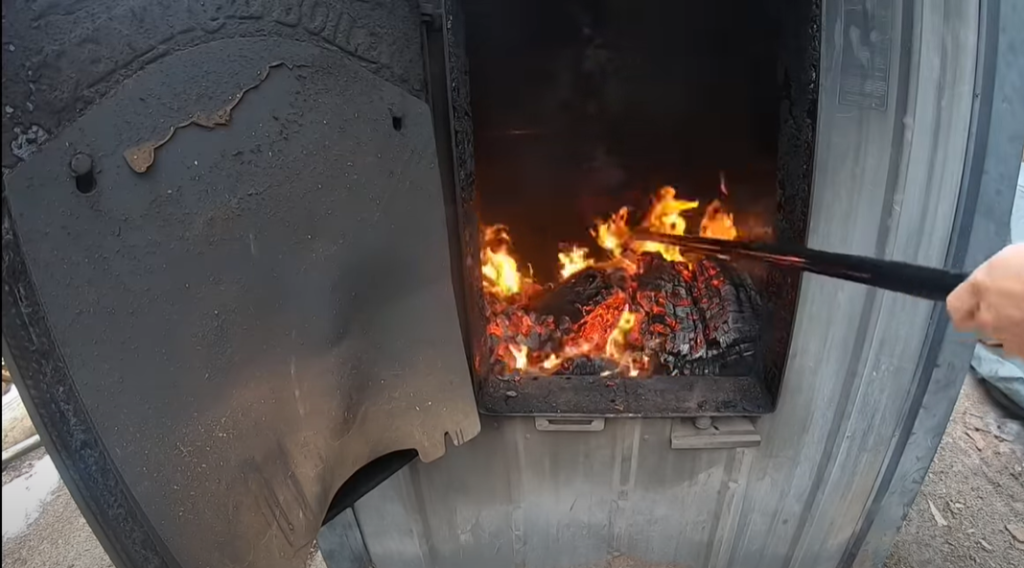
What Kind Of Wood Cannot Be Burned In A Fireplace?
Before discussing the specifics of burning pine in a fireplace, it’s important to know which kinds of wood are not suitable for burning. Some types of wood contain oils and chemicals that can be toxic when burned, so it’s best to avoid burning them entirely. These include:
- Cedar
- Redwood
- Pine (in some cases)
- Douglas fir
- Larch
- Mulberry
- Particle board or plywood
Additionally, softwoods such as pine can cause excessive creosote buildup within your chimney flue. Creosote is a highly combustible substance that builds up on the inner walls of the flu. If allowed to accumulate, it can lead to chimney fires. [4]
Useful Tips For Burning Pine In The Fireplace
Pine is a common type of wood that is used for fuel in fireplaces and other home heating sources. Some people may not be aware that pine can be burned, but it can indeed provide an excellent source of heat.
When burning pine in the fireplace, there are some key tips to keep in mind:
- Make sure that all needles and twigs have been removed from the logs before burning them. These bits of debris will burn up quickly and create a lot of sparks which could fly out into the room or start a fire outside of the fireplace.
- Pine is best used as kindling rather than as main fuel for the fire. If you are using larger logs of pine, you should break them into smaller pieces so that they burn more efficiently.
- Burning pine in the fireplace can create smoke and a strong scent which some people may find unpleasant. If this is an issue, you could try adding a few drops of lavender oil to the fire to help balance out the smell.
- To reduce flare-ups, use only dry wood when burning pine in the fireplace. This will help keep the fire under control and burning at a steady rate.
Following these tips will ensure that you get the most heat from your fireplace while also avoiding any potential danger from sparks or flares. With proper care and attention, you should be able to enjoy many cozy fires using pine as fuel for your fireplace or stove. As with any fire, be sure to keep an eye on it and maintain proper safety precautions.
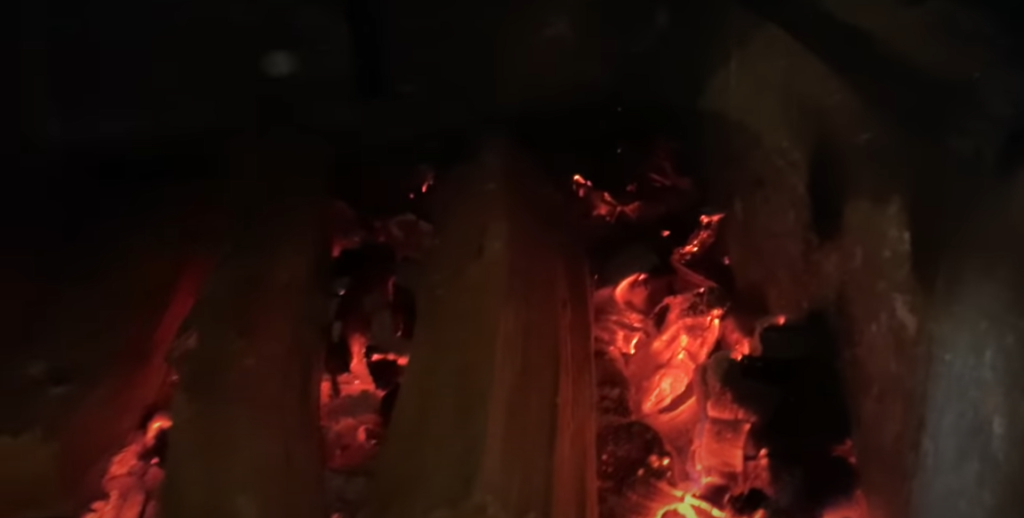
Comparison of Firewood Types for Fireplace Burning
Choosing the right firewood for your fireplace is essential for safety and efficiency. Below is a comparison of different types of firewood, including pine, for fireplace burning.
| Firewood Type | Characteristics | Burn Time | Heat Output | Residue and Emissions |
|---|---|---|---|---|
| Pine | Softwood, ignites easily, fast-burning, aromatic, may produce more creosote. | Quick burn, short-lived flame. | Moderate heat output, suitable for kindling or quick fires. | Higher residue and creosote buildup, potentially leading to chimney issues. |
| Oak | Hardwood, dense and slow-burning, long-lasting coals, minimal creosote. | Long burn, sustained heat source. | High heat output, excellent for heating homes. | Low residue and creosote, reducing chimney maintenance needs. |
| Maple | Hardwood, dense and medium-burning, clean-burning wood with a pleasant aroma. | Moderate burn time with sustained flames. | Good heat output, suitable for heating purposes. | Low residue and creosote buildup, relatively easy on the chimney. |
| Cherry | Hardwood, medium to slow-burning, produces a sweet, fruity aroma when burned. | Moderate to long burn time, great for ambiance and mild heating. | Moderate heat output, ideal for milder weather or smaller spaces. | Low residue and creosote, generally clean-burning. |
Explanation of the table:
- The table provides a comparison of different firewood types, including pine, for fireplace burning, with columns highlighting characteristics, burn time, heat output, and residue and emissions considerations.
- Each firewood type is described, emphasizing its unique characteristics and suitability for different fireplace needs.
FAQ
Can you burn pine in a wood stove?
Yes, you can burn pine in a wood stove. However, it is important to note that pine is not the best choice for burning in a wood stove due to its high sap content and low density. Pine produces more soot and creosote than other types of firewood, which can reduce the efficiency of your stove and increase the risk of a chimney fire if left untreated. Additionally, because pine burns quickly at higher temperatures than other types of firewood, it may also contribute to faster consumption of fuel.
How do you burn ponderosa pine in a fireplace?
Ponderosa pine can be burned safely in a wood burning fireplace. The wood should be well seasoned, meaning that it has been dried for at least six months prior to use. It is important to check the moisture content of the wood before lighting your fire—it should have a moisture content of 20% or less. To ensure this, properly store your firewood in a dry area covered with waterproof material. When starting the fire, make sure to use only small pieces of kindling since ponderosa pine has lower density than other types of woods and may burn too quickly if large chunks are used. It is also beneficial to add hardwoods such as oak or hickory to help sustain a longer-lasting fire as these woods have a higher BTU rating than pine.
Burning softwood in the fireplace?
You’re not alone. Many people opt for the convenience and cost savings of burning pine in a fireplace, but there are some important considerations to keep in mind before you do so.This comprehensive guide will provide answers to the most common questions about burning pine in a fireplace, including the potential risks and benefits, as well as reviews of recommended products and helpful tips. We’ll cover all aspects of safely using softwood in your home’s fireplace or wood-burning stove. So, can you burn pine in a fireplace? The answer is yes — with caution! Softwoods such as pine contain higher levels of resin than hardwoods, which produces more smoke when burned. As a result, it’s important to be aware that smoke from softwoods can be hazardous to your health and may cause smog alerts in the area. In addition to this, burning softwood in a fireplace or wood-burning stove produces more creosote (a byproduct of combustion) than hardwood. This means that it’s important to regularly clean your chimney to avoid build up of soot, which is a fire hazard. You should also check for any blockages such as bird nests or leaves before lighting a fire with pine logs. It’s also worth noting that burning softwood tends to produce less heat than hardwood does, meaning you may need to use more fuel when using pine logs for your fireplace or stove. It’s recommended that you use a mix of hardwood and softwood in your fireplace or stove to ensure optimal performance. When it comes to purchasing the right type of pine logs for burning, you’ll want to look for dry wood that has been seasoned (dried) for at least six months. Look out for any signs of mold or rot before purchasing, as this can be dangerous when burned.
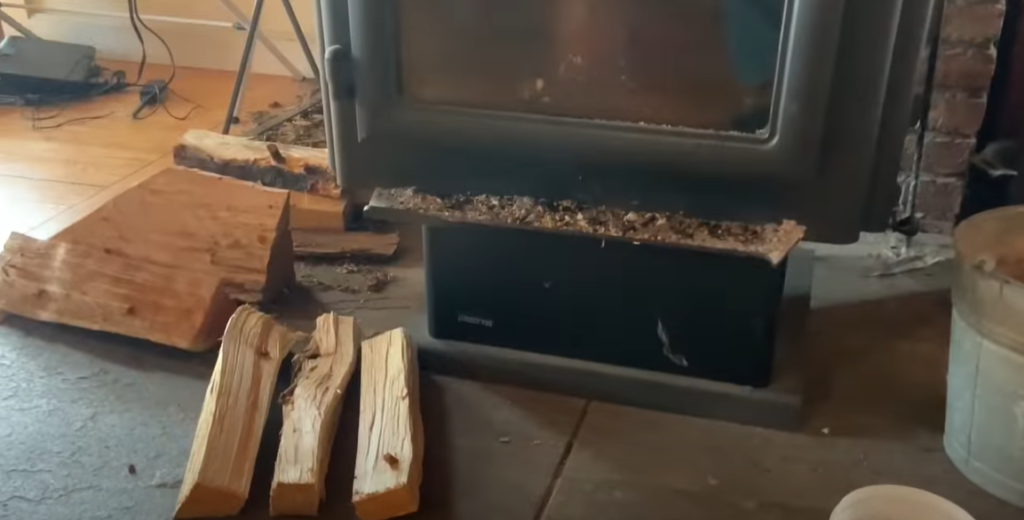
How to properly burn pine on a bonfire?
If you are looking to burn pine in a fireplace, it is important to take the necessary safety precautions. Pine wood can be quite volatile when burning and should always be used with caution. The first step is to make sure that your fireplace is suitable for burning pine. Check for any signs of wear or damage and ensure the firebox is large enough for the size of log you want to burn. Additionally, make sure there are no flammable objects nearby such as furniture or curtains.
It is also essential that you use seasoned (dried) pine logs if possible as this will help reduce smoke production and improve efficiency. Green logs still retain water which will cause more smoke as well as creosote build-up in the flue. Once you have established that your fireplace is suitable for burning pine, there are a few best practices to follow when burning it.
Always start with tinder and kindling at the bottom of the firebox to help ignite the wood. Once these have caught alight, add your pine logs one by one ensuring there’s enough room between them for proper air circulation. This will help maintain an even burn throughout and allow better access to oxygen which leads to more efficient combustion. It is also important not to overload your fireplace with too much wood as this can lead to smoke and creosote build up in the flue as well as putting unnecessary strain on your chimney liner. Additionally, avoid having the fireplace too hot as this will also lead to smoke and creosote build-up.
Finally, always make sure your fireplace is properly maintained with regular cleaning and inspections. This will help keep it safe and reduce the risk of fire hazards.
How do you burn oak in a fireplace?
Burning oak in a fireplace is not recommended, as it can easily spark and cause an uncontrolled fire. This type of wood burns very quickly, releasing a lot of heat during combustion. It’s best to use hardwoods like maple or ash that burn more slowly and evenly with less sparks.
Is burning pine wood toxic?
Pine wood is not toxic, but it does have a higher resin content than other types of wood. This can result in more smoke and sooty deposits forming on the interior surfaces of your fireplace or chimney if burned in an open fire. It also has a reduced heat output when compared to some of the hardwood varieties, making it less efficient as a fuel source. Therefore, while burning pine is not toxic, it may not be the best choice for use in your fireplace.
Do Gas Fireplaces Need a Chimney?
When looking into burning pine in a fireplace, it’s important to understand the types of fireplaces available. Gas fireplaces are a popular option, but they don’t require a chimney like traditional wood-burning fireplaces do. This makes them an attractive choice for homeowners living in areas where a chimney isn’t possible or desirable. However, because these fireplaces use natural gas as fuel, you won’t be able to burn wood in them. Pine is no exception — if you have a gas fireplace, then burning pine logs isn’t an option.
How To Season Pine Wood?
When it comes to burning pine in a fireplace, one of the most important steps is seasoning. Seasoning wood refers to reducing moisture content as much as possible until the wood reaches an ideal level for burning. This process can take anywhere from six months to two years depending on the type of wood and how it was stored.When seasoning pine, it’s important that you use the right methods. Avoid simply stacking the logs outside or in a garage – this will not dry out the wood properly and could lead to dangerous creosote buildup in your chimney system. Instead, stack them off the ground in small stacks with enough air circulation around each log so that they dry evenly over time.
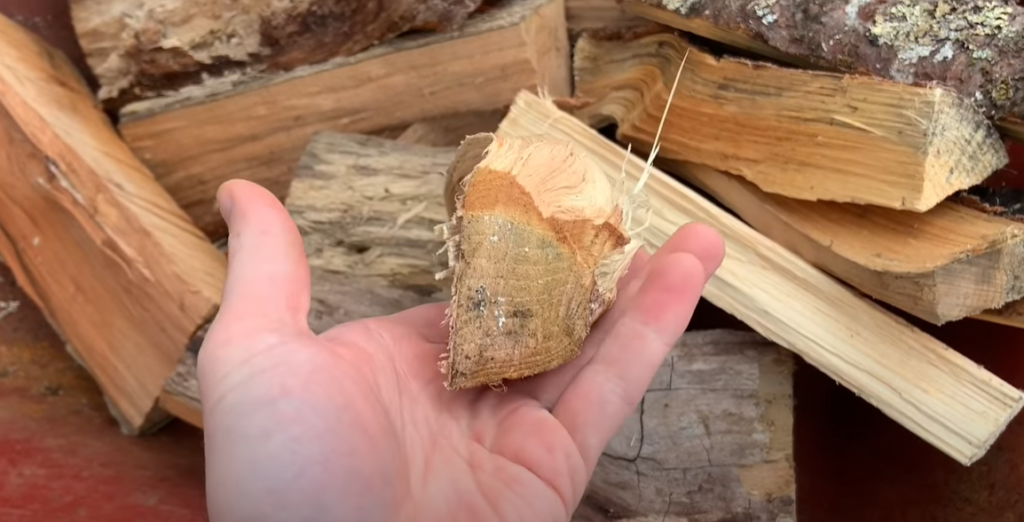
Another option is kiln-drying, which uses heat and moisture control to speed up the seasoning process. This can work well for pine, as long as you make sure not to over-dry it.
How Much Do Woods Vary In Cost
When it comes to burning wood in a fireplace, the cost varies widely depending on the type of wood you’re using. Pine is one of the most affordable types of wood, making it an attractive option for those who are looking to save money. Pine is also relatively easy to source and can commonly be found at home improvement stores or lumber yards.
When Do I Call A Professional?
If you’re new to the world of building a fire in a fireplace, it’s important to know when to call in a professional. Some of the tasks you should leave up to an experienced chimney sweep or contractor include:
- Cleaning your chimney and flue – this is essential for safety as creosote can build-up overtime, which can create hazardous conditions like fires.
- Installing and maintaining smoke alarms, carbon monoxide detectors and other safety equipment
- Inspecting the integrity of your firebox, damper, and flue liner
- Checking that your fireplace meets local building codes and requirements
- Looking at any issues with draftiness, efficiency or air quality in your home In addition, you may want to call in a professional if you’re unsure about burning pine or any type of wood in your fireplace.
Professionals can provide expert advice and help ensure that your fire burns safely and efficiently. Finally, it’s important to remember that while burning pine logs is allowed, they should only be used as an occasional treat. Pine has high levels of sap, which produces more creosote than other types of wood when burned. This means that you’ll need to clean the chimney more often and keep an eye on the flue for blockages or obstructions. It’s best to reserve pine firewood for special occasions!
Is it safe to burn pine in a fireplace?
Burning pine in a fireplace can be risky. Pine wood contains high resin content, which can lead to creosote buildup in your chimney. Creosote is highly flammable and can increase the risk of chimney fires. It’s generally safer to avoid burning pine and opt for hardwoods with lower resin content for your fireplace.
What are the dangers of burning pine in a fireplace?
Burning pine in a fireplace can result in several dangers. The high resin content in pine wood can lead to excessive creosote buildup in the chimney, increasing the risk of chimney fires. Additionally, the quick ignition and intense heat from pine can cause sparks, which may lead to fires in your home or chimney.
Can you mix pine with other types of firewood in a fireplace?
It’s generally not recommended to mix pine with other types of firewood in a fireplace. The dangers associated with burning pine, such as creosote buildup and increased risk of chimney fires, can still be present even when mixed with other woods. For safety, it’s best to use hardwoods and avoid pine.
Are there specific types of pine that are safer to burn in a fireplace?
While some types of pine may have lower resin content than others, it’s generally safer to avoid burning any type of pine in a fireplace. Pine wood, in general, is known for its high resin content, which poses a risk of creosote buildup and chimney fires. Choosing hardwoods is a safer option for your fireplace.
What is the best type of firewood for a fireplace?
The best type of firewood for a fireplace is hardwood, such as oak, maple, or hickory. Hardwoods have lower resin content and burn cleaner, producing less creosote. They provide a longer-lasting and more efficient source of heat while reducing the risks associated with burning softwood like pine.
Useful Video: Can I Burn Pine in a Woodstove or Fireplace?
Conclusion
Burning pine in a fireplace is an economical and convenient way to heat your home. However, it is important to understand the risks associated with burning this type of wood before you do so. Use caution when burning pine in your fireplace and make sure that you are following all safety protocols for your particular model and type. For more information on how to safely burn pine in a fireplace, speak to a professional who can offer advice and tips on using this type of fuel safely. Additionally, consider purchasing items like fire starters or firewood racks to help ensure that the fire stays lit. With proper preparation and care, you can enjoy the benefits of a warm home with the use of pine logs in your fireplace.
References:
- https://fireplacetips.com/burning-pinewood/
- https://www.heatwhiz.com/burn-pine-in-wood-stove-fireplace/
- https://fireproofdepot.com/can-you-burn-pine-wood-in-a-fireplace/
- https://hvacseer.com/can-you-burn-pine-in-a-fireplace/





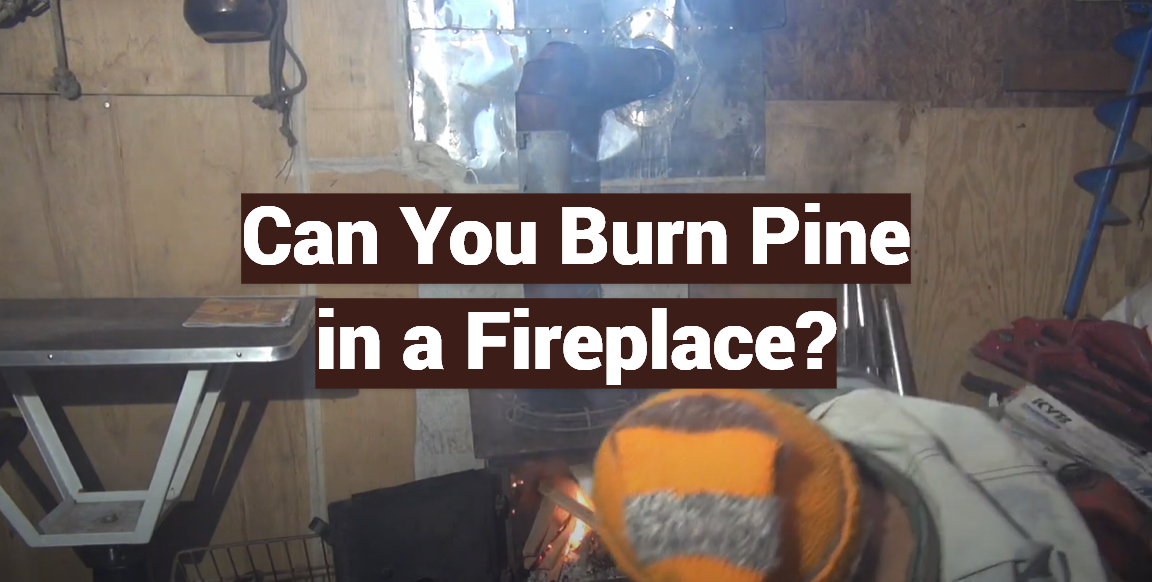




Leave a Review